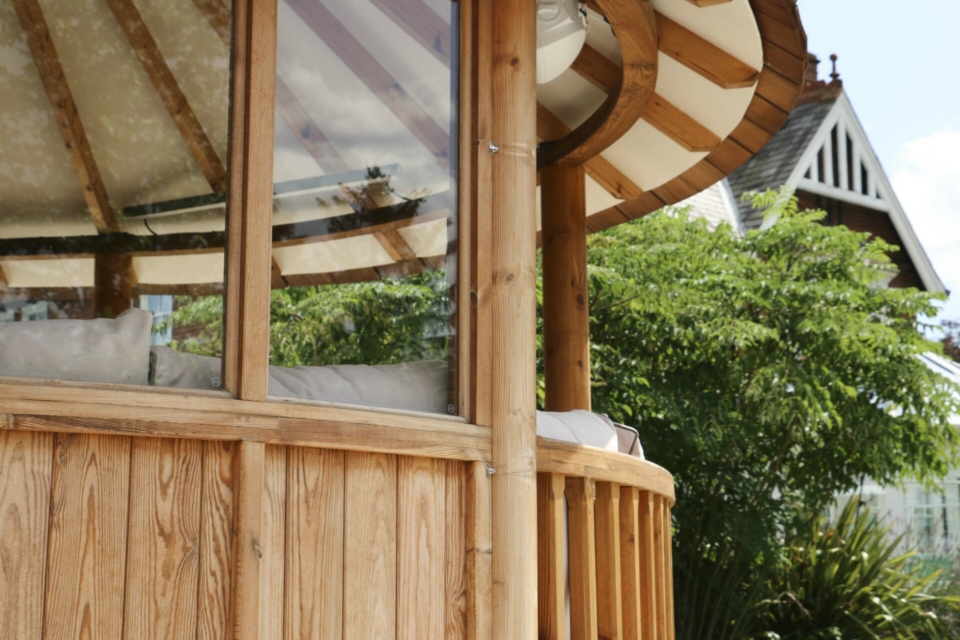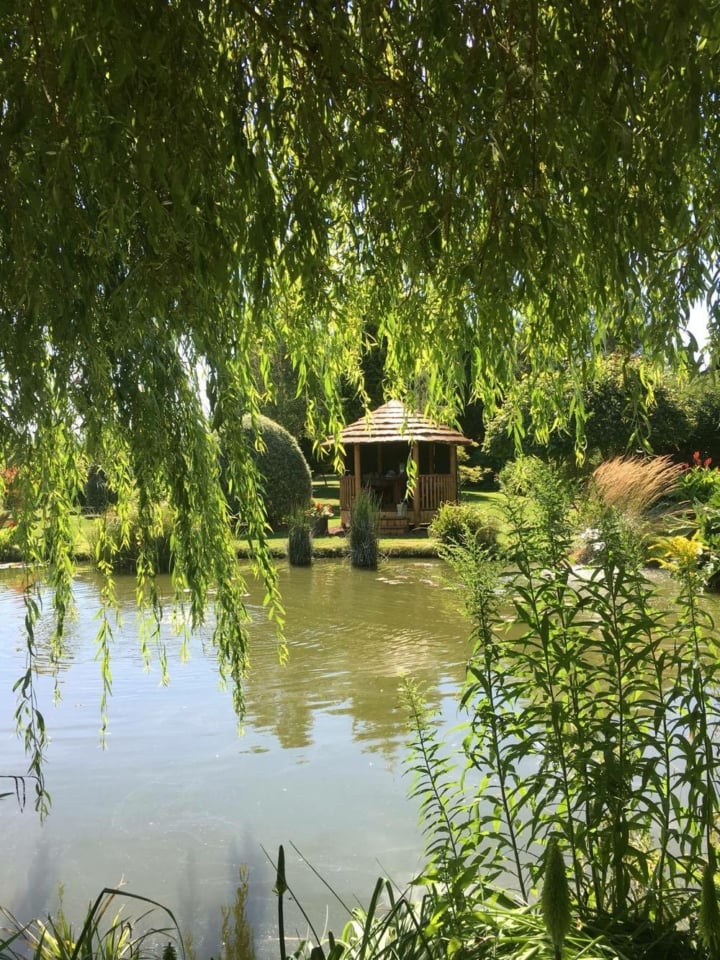Creating your outdoor haven involves more than just placing a gazebo; it’s about establishing a sanctuary that withstands the elements while radiating charm. But, to ensure longevity and safety, a robust foundation is non-negotiable.
A well-built foundation is essential in maintaining the gazebo’s level position from day one, and to keep it in top notch condition. A gazebo requires a sturdy foundation to ensure stability and resilience against adverse weather conditions. The foundation serves as a solid anchor, keeping your beloved garden structure from whatever the weather has in store. Without a robust foundation, the gazebo is susceptible to gradual shifting, tilting, or might compromise the structure.
Determining the ideal foundation for your gazebo depends on various factors such as its size, the nature of the ground where it will be situated, and your budget. Opting for a concrete pad is advisable for larger gazebos or areas with soft or marshy ground. Equally, if cost is a priority, a gravel pad might be preferable.
We’ll explore the most common gazebo foundation ideas to help you determine the most suitable choice for your needs whilst elevating your outdoor escape and sidestep potential setbacks, drawing from Breeze House’s extensive expertise in crafting premium outdoor sanctuaries.
Concrete Slab Foundation
A concrete slab foundation is the most common type of gazebo foundation. Concrete offers a level, sturdy platform for your gazebo and is renowned for its strength and resilience. Particularly suited for high-traffic zones or regions prone to winter frost, it’s straightforward to install and demands minimal upkeep, making it a favoured choice among gazebo owners.
Pros:
- Durability: A properly poured concrete slab can withstand the test of time, resisting deterioration from weather exposure, ground movement, and other external factors.
- Cost: Compared to other foundation options, a concrete slab foundation offers notably lower material and labour costs.
- Efficiency: Concrete’s insulating properties effectively moderate indoor temperatures, contributing to lower energy usage within structures.
- Maintenance: Requiring only minimal maintenance, concrete slabs offer property owners a hassle-free foundation solution.
Cons:
- Versatility: Once a concrete slab foundation is set, altering the layout or integrating plumbing or electrical components becomes challenging.
- Cracking: Over time, concrete slabs are susceptible to cracking, particularly in regions with fluctuating temperatures.
- Drainage: In wetter areas ensure appropriate drainage is installed to avoid water accumulation beneath the foundation.
Raised Wood Platform
Radiating rustic charm, raised wood platforms offer an appealing aesthetic touch to outdoor spaces. Constructing a wooden deck foundation involves building a wooden structure which the gazebo is positioned on top of. Particularly suitable for smaller or raised gazebos, this foundation type offers a secure and stable base for the structure.
Pros:
- Cost: Wooden Platforms typically come at a lower cost, compared to alternatives like concrete, and is perfect for uneven terrains, avoiding the need for extensive excavation or grading.
- Visual appeal: The natural warmth and texture of wood can complement various landscaping styles, creating a cosy and inviting atmosphere.
Cons:
- Vulnerability to moisture: Being porous, wood is prone to moisture-related harm, especially in regions with elevated humidity or frequent rain.
- Lifespan: wooden deck foundations generally have a shorter lifespan compared to alternative foundation types.
- Maintenance: Wood requires a level of maintenance to preserve its quality.
Gravel Base
A gravel foundation is ideal for regions with soft or marshy soils or winter freeze conditions. With excellent drainage, ventilation, and adaptability to various weather conditions (aiding in maintaining the gazebo’s dryness and airflow) gravel bases are a favoured choice for gazebo foundations.
Pros:
- Cost: Gravel pad materials and their straightforward installation makes them a practical and budget-friendly solution.
- Installation: Setting up a gravel pad is relatively straightforward and can be completed quickly.
- Drainage: The porous nature of gravel promotes efficient drainage, reducing the risk of water damage to your structure.
- Environmental impact: Gravel is a natural and locally sourced material that does not require significant resources to produce. It is also recyclable and reusable, making it a more sustainable option than other foundation materials.
Cons:
- Uneven Surface: Gravel pads may not produce a perfectly level surface, potentially complicating structure installation and usage.
- Potential Shifting: Over time, gravel pads can shift, potentially destabilizing or unevenly positioning your structure.
- Lifespan: Compared to alternative materials, gravel pads lack durability and need to be replaced or replenished over time.
Stone Foundation
Whether adorned with flagstone, cobblestone, or natural stone, their enduring beauty makes them a standout choice for gazebo foundations. Patio stones are positioned on a levelled surface, ensuring stability for a gazebo foundation. Anchored to these stones, the gazebo remains secure against shifting and tipping. Opting for sizable, weighty stones enhances stability, while a barrier between the stones and the ground prevents weed and grass intrusion, maintaining foundation integrity.
Pros:
- Aesthetic: Available in diverse colours, shapes, and textures, patio stones offer customisable options to complement your home’s architecture and personal style.
- Durability: Crafted from materials like concrete, natural stone, or brick, patio stones withstand heavy foot traffic and various weather conditions effectively.
- Maintenance: Damaged or cracked stones can be swiftly replaced without an entire patio overhaul.
Cons:
- Cost: Patio stones may incur higher costs compared to alternative outdoor flooring options like concrete or wooden decking.
- Slip Hazards: Certain types of patio stones pose slip risks when wet, potentially compromising safety for homeowners and visitors.
- Uneven Terrain: Depending on stone type and installation method, surfaces may be uneven, making your luxury gazebo installation much more challenging.
It’s always advised that you speak to an expert to determine the most suitable base for you. Ultimately, a well-constructed gazebo foundation is crucial for ensuring a secure and steady structure. Consider factors such as budget, gazebo size, soil type, and personal preferences when selecting the optimal foundation for your gazebo.
Breeze House takes pride in our extensive experience of 30 years in installing gazebos, backed by their team of in-house trained installers. Whether you’re considering the most suitable base for your new Breeze House gazebo or need assistance and advice, their customer service team is readily available to provide guidance and support. Don’t hesitate to reach out to them for expert advice tailored to your specific needs and preferences.


